Schedule
Cotton Crop Schedule
| Product Name | Fertilizers | ||||||
|---|---|---|---|---|---|---|---|
| Poornima Kit | NPK Grow Caps |
Humigrow Nano Powder |
Alp | Amavasya Kit | IBP Kit | ||
| Humic Acid | Chelated Multi-micronutrient |
||||||
| Land Reparation | month -2 | ||||||
| Soil Treatment | month -1 | 1 Kit | |||||
| Before Seed Sowing | month 0 | ||||||
| Germination | month 1 | 1 Kit | |||||
| Vegetative Growth | month 2 | ||||||
| month 3 | 1 Kit | ||||||
| month 4 | 500gm | ||||||
| month 5 | 2 Caps | 120gm | |||||
| month 6 | 1 Kit | ||||||
| Harvesting | |||||||
| Total Quantity | 2 Kit | 2 Caps | 120gm | 500gm | 1 Kit | 1 Kit | |
| Broadcast | |
| Top Dressing | |
| Basal Dressing | |
| Soil Application | |
| Spray | |
| * | Optional |
NOTE: For the first year donot immidietaly substitute 100% chemical fertilizer with the SIESTO GREEN products, as the soil is used to chemical fertilizer, it may affect the output. So the best way to substitute is by reducing 50% of chemical input in the first year, 25% the following 2nd year, & then another 10% by the 3rd year. After the 3rd year use synthetic fertilizer / inorganic fertilizer if their is a requirement depending on the soil health.
CROP SCHEDULE FOR COTTON
Sr. No.
Treatment / Application
Product
Dose /Acre
APPLICATION
Management
1
Vegetative – Dissolve in 20 to 200 ltr. of water as required for 1 acre of land and apply through Drip Irrigation or drench.
POORNIMA KIT
1 KIT
Apply it in month 1st & 3rd
It is a balanced form of nutrients that includes NPK, Zinc, Cropforce NP, Humigrow NP, and Mycorrhiza NP
2
Vegetative growth – Dissolve in 2 – 5 liters of water as per requirement for 1 acre of land and spray on the soil, or mix it with soil, FYM, or any sort of organic fertilizer and broadcast it to the field.
NPK + Humigrow NP
2 caps + 120gm
Apply it in month 5th
It is a balanced form of Nutrition that includes NPK.
3
At boll formation stage – Mix in 20 – 200 liters of water as per requirement and apply through Drip Irrigation or drench.
ALP
500/200 lit. of water
Apply it in month 4th
It is a Micronutrient and PGP that helps in Growth, Fruit set, and the quality of the produce.
4
Vegetative and Flowering/ Fruiting – Mix all with the required amount of water and apply through foliar spray or as per infestation of insect.
Amavasya kit
1 KIT
Apply it in month 6th
It is a balanced form of insecticides. Which include Traps, lifeline, Bt, Acarida, and Meta capsules.
5
Soil Treatment – Dissolve in 2 – 5 liters of water as per requirement for 1 acre of land and spray on the soil, or mix it with soil, FYM, or any sort of organic fertilizer and broadcast it to the field.
IBP KIT
1 KIT
Apply it as soil treatment before sowing/transplanting.
It prevents soil-born diseases and nematodes. Apply as per the soil health and soil-born diseases.
PEST ATTACKS, BACTERIAL, OR FUNGAL MANAGEMENT
PEST / BACTERIAL / FUNGAL
IDENTIFICATION IN CROP
SYMPTOMS
SUGGESTED PRODUCT
American Bollworm
 Larva feed on the leaves initially and later bore onto the square/boll by thrusting their head alone inside, leaving the rest of their body outside.
Meta + BT
Pink Bollworm
Larva feed on the leaves initially and later bore onto the square/boll by thrusting their head alone inside, leaving the rest of their body outside.
Meta + BT
Pink Bollworm
 Larvae feed on flower buds, and flowers and bore into cotton bolls.
Meta + BT
Tobacco Caterpillar
Larvae feed on flower buds, and flowers and bore into cotton bolls.
Meta + BT
Tobacco Caterpillar
 Larva feeds gregariously on the leaves and skeletonizes them leaving only the veins and midrib.
Traps + BT + Meta
Aphids
Larva feeds gregariously on the leaves and skeletonizes them leaving only the veins and midrib.
Traps + BT + Meta
Aphids
 Tender shoots and undersurface of the leaves are mostly infested.
Lifeline + Traps + BT
Jassid
Tender shoots and undersurface of the leaves are mostly infested.
Lifeline + Traps + BT
Jassid
 Nymphs and adults suck the sap from the undersurface of the leaves causing the yellowing of leaves.
Lifeline + Traps + BT
Thrips
Nymphs and adults suck the sap from the undersurface of the leaves causing the yellowing of leaves.
Lifeline + Traps + BT
Thrips
 Nymphs and adults scrap the tissue and suck the sap from the epidermis of the leaves.
Lifeline + Traps + BT
Whitefly
Nymphs and adults scrap the tissue and suck the sap from the epidermis of the leaves.
Lifeline + Traps + BT
Whitefly
 Irregular yellowing (Chlorotic spots) of leaf tissue.
Lifeline + Traps + BT
Mealybug
Irregular yellowing (Chlorotic spots) of leaf tissue.
Lifeline + Traps + BT
Mealybug
 White fluffy mass of mealybugs can be seen on the underside of the leaves, near growing tips and stems with waxy secretions.
Lifeline + Traps + BT
Mites
White fluffy mass of mealybugs can be seen on the underside of the leaves, near growing tips and stems with waxy secretions.
Lifeline + Traps + BT
Mites
 Fine webbings can be seen on the undersurface of the leaves.
Acarida + Traps + BT
Fusarium Wilt
Fine webbings can be seen on the undersurface of the leaves.
Acarida + Traps + BT
Fusarium Wilt
 The earliest symptoms appear on the seedlings in the cotyledons which turn yellow and then brown. The base of the petiole shows a brown ring, followed by wilting and drying of the seedlings.
Indofa + Bacillus
Anthracnose
The earliest symptoms appear on the seedlings in the cotyledons which turn yellow and then brown. The base of the petiole shows a brown ring, followed by wilting and drying of the seedlings.
Indofa + Bacillus
Anthracnose
 The fungus infects the seedlings and produces small reddish circular spots on the cotyledons and primary leaves.
Indofa + Bacillus
Seedling Blight
The fungus infects the seedlings and produces small reddish circular spots on the cotyledons and primary leaves.
Indofa + Bacillus
Seedling Blight
 Small, water-soaked, circular, or irregular lesions develop on the cotyledons. Later, the infection spreads to the stem through the petiole and causes withering and death of seedlings.
Indofa + Bacillus
Angular Leaf Spot
Small, water-soaked, circular, or irregular lesions develop on the cotyledons. Later, the infection spreads to the stem through the petiole and causes withering and death of seedlings.
Indofa + Bacillus
Angular Leaf Spot
 Small, dark green, water-soaked areas develop on the lower surface of leaves, enlarge gradually and become angular when restricted by veins and veinlets and spots are visible on both the surface of leaves.
Indofa + Bacillus
Vein Blight/ Vein Necrosis/ Black Vein
Small, dark green, water-soaked areas develop on the lower surface of leaves, enlarge gradually and become angular when restricted by veins and veinlets and spots are visible on both the surface of leaves.
Indofa + Bacillus
Vein Blight/ Vein Necrosis/ Black Vein
 The infection of veins causes blackening of the veins and veinlets, giving a typical “blighting” appearance. On the lower surface of the leaf, bacterial oozes are formed as crusts or scales.
Indofa + Bacillus
Black Arm
The infection of veins causes blackening of the veins and veinlets, giving a typical “blighting” appearance. On the lower surface of the leaf, bacterial oozes are formed as crusts or scales.
Indofa + Bacillus
Black Arm
 On the stem and fruiting branches, dark brown to black lesions are formed, which may girdle the stem and branches to cause premature drooping off of the leaves, cracking of the stem, and gummosis, resulting in the breaking of the stem.
Indofa + Bacillus
Square Rot/ Boll Rot
On the stem and fruiting branches, dark brown to black lesions are formed, which may girdle the stem and branches to cause premature drooping off of the leaves, cracking of the stem, and gummosis, resulting in the breaking of the stem.
Indofa + Bacillus
Square Rot/ Boll Rot
 On the bolls, water-soaked lesions appear and turn into dark black and sunken irregular spots. The infection slowly spreads to the entire boll and shedding occurs.
Indofa + Bacillus
On the bolls, water-soaked lesions appear and turn into dark black and sunken irregular spots. The infection slowly spreads to the entire boll and shedding occurs.
Indofa + Bacillus
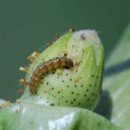 Larva feed on the leaves initially and later bore onto the square/boll by thrusting their head alone inside, leaving the rest of their body outside.
Meta + BT
Pink Bollworm
Larva feed on the leaves initially and later bore onto the square/boll by thrusting their head alone inside, leaving the rest of their body outside.
Meta + BT
Pink Bollworm
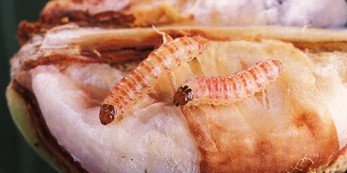 Larvae feed on flower buds, and flowers and bore into cotton bolls.
Meta + BT
Tobacco Caterpillar
Larvae feed on flower buds, and flowers and bore into cotton bolls.
Meta + BT
Tobacco Caterpillar
 Larva feeds gregariously on the leaves and skeletonizes them leaving only the veins and midrib.
Traps + BT + Meta
Aphids
Larva feeds gregariously on the leaves and skeletonizes them leaving only the veins and midrib.
Traps + BT + Meta
Aphids
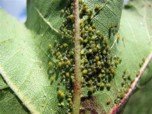 Tender shoots and undersurface of the leaves are mostly infested.
Lifeline + Traps + BT
Jassid
Tender shoots and undersurface of the leaves are mostly infested.
Lifeline + Traps + BT
Jassid
 Nymphs and adults suck the sap from the undersurface of the leaves causing the yellowing of leaves.
Lifeline + Traps + BT
Thrips
Nymphs and adults suck the sap from the undersurface of the leaves causing the yellowing of leaves.
Lifeline + Traps + BT
Thrips
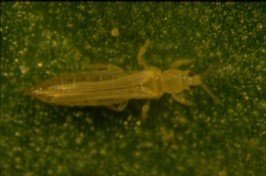 Nymphs and adults scrap the tissue and suck the sap from the epidermis of the leaves.
Lifeline + Traps + BT
Whitefly
Nymphs and adults scrap the tissue and suck the sap from the epidermis of the leaves.
Lifeline + Traps + BT
Whitefly
 Irregular yellowing (Chlorotic spots) of leaf tissue.
Lifeline + Traps + BT
Mealybug
Irregular yellowing (Chlorotic spots) of leaf tissue.
Lifeline + Traps + BT
Mealybug
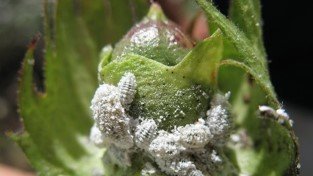 White fluffy mass of mealybugs can be seen on the underside of the leaves, near growing tips and stems with waxy secretions.
Lifeline + Traps + BT
Mites
White fluffy mass of mealybugs can be seen on the underside of the leaves, near growing tips and stems with waxy secretions.
Lifeline + Traps + BT
Mites
 Fine webbings can be seen on the undersurface of the leaves.
Acarida + Traps + BT
Fusarium Wilt
Fine webbings can be seen on the undersurface of the leaves.
Acarida + Traps + BT
Fusarium Wilt
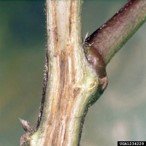 The earliest symptoms appear on the seedlings in the cotyledons which turn yellow and then brown. The base of the petiole shows a brown ring, followed by wilting and drying of the seedlings.
Indofa + Bacillus
Anthracnose
The earliest symptoms appear on the seedlings in the cotyledons which turn yellow and then brown. The base of the petiole shows a brown ring, followed by wilting and drying of the seedlings.
Indofa + Bacillus
Anthracnose
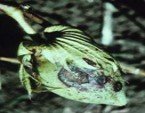 The fungus infects the seedlings and produces small reddish circular spots on the cotyledons and primary leaves.
Indofa + Bacillus
Seedling Blight
The fungus infects the seedlings and produces small reddish circular spots on the cotyledons and primary leaves.
Indofa + Bacillus
Seedling Blight
 Small, water-soaked, circular, or irregular lesions develop on the cotyledons. Later, the infection spreads to the stem through the petiole and causes withering and death of seedlings.
Indofa + Bacillus
Angular Leaf Spot
Small, water-soaked, circular, or irregular lesions develop on the cotyledons. Later, the infection spreads to the stem through the petiole and causes withering and death of seedlings.
Indofa + Bacillus
Angular Leaf Spot
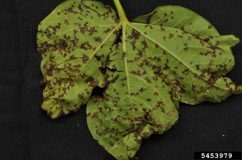 Small, dark green, water-soaked areas develop on the lower surface of leaves, enlarge gradually and become angular when restricted by veins and veinlets and spots are visible on both the surface of leaves.
Indofa + Bacillus
Vein Blight/ Vein Necrosis/ Black Vein
Small, dark green, water-soaked areas develop on the lower surface of leaves, enlarge gradually and become angular when restricted by veins and veinlets and spots are visible on both the surface of leaves.
Indofa + Bacillus
Vein Blight/ Vein Necrosis/ Black Vein
 The infection of veins causes blackening of the veins and veinlets, giving a typical “blighting” appearance. On the lower surface of the leaf, bacterial oozes are formed as crusts or scales.
Indofa + Bacillus
Black Arm
The infection of veins causes blackening of the veins and veinlets, giving a typical “blighting” appearance. On the lower surface of the leaf, bacterial oozes are formed as crusts or scales.
Indofa + Bacillus
Black Arm
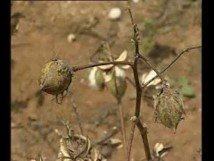 On the stem and fruiting branches, dark brown to black lesions are formed, which may girdle the stem and branches to cause premature drooping off of the leaves, cracking of the stem, and gummosis, resulting in the breaking of the stem.
Indofa + Bacillus
Square Rot/ Boll Rot
On the stem and fruiting branches, dark brown to black lesions are formed, which may girdle the stem and branches to cause premature drooping off of the leaves, cracking of the stem, and gummosis, resulting in the breaking of the stem.
Indofa + Bacillus
Square Rot/ Boll Rot
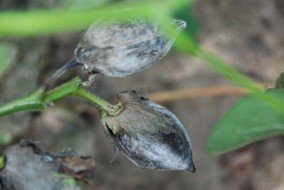 On the bolls, water-soaked lesions appear and turn into dark black and sunken irregular spots. The infection slowly spreads to the entire boll and shedding occurs.
Indofa + Bacillus
On the bolls, water-soaked lesions appear and turn into dark black and sunken irregular spots. The infection slowly spreads to the entire boll and shedding occurs.
Indofa + Bacillus
NUTRITION DEFICIENCY
NUTRIENT
IDENTIFICATION
SYMPTOMS
SUGGESTED PRODUCT
Nitrogen Deficiency
 Stunted plants with yellowish-green leaf color and reduced size.
Azoss Caps
Phosphorus
Stunted plants with yellowish-green leaf color and reduced size.
Azoss Caps
Phosphorus
 Symptoms may include smaller, very dark green leaves, with purplish reddening.
PSB Plus Caps
Potassium
Symptoms may include smaller, very dark green leaves, with purplish reddening.
PSB Plus Caps
Potassium
 It appears early in the growing season, begins in the lower canopy first, and then later spreads throughout the plant.
Potash Grow Caps
Boron
It appears early in the growing season, begins in the lower canopy first, and then later spreads throughout the plant.
Potash Grow Caps
Boron
 It may cause distorted, stunted terminal, abnormal uppermost leaves, and aborted flowers. Other symptoms of B shortage may be a "coon-tailed" appearance with dark rings on the leaf petiole (stem).
Alp
Sulfur
It may cause distorted, stunted terminal, abnormal uppermost leaves, and aborted flowers. Other symptoms of B shortage may be a "coon-tailed" appearance with dark rings on the leaf petiole (stem).
Alp
Sulfur
 Sulfur deficiency symptoms first appear as a yellowing, chlorotic appearance in the upper leaves and leaf veins, because S is not very mobile in the plant.
Sulphur Caps
Iron
Sulfur deficiency symptoms first appear as a yellowing, chlorotic appearance in the upper leaves and leaf veins, because S is not very mobile in the plant.
Sulphur Caps
Iron
 Iron deficiency may appear as leaf veins remaining somewhat green, while uppermost leaves become chlorotic and bleached because Fe is not readily transferred from older to younger tissues.
Alp
Zinc
Iron deficiency may appear as leaf veins remaining somewhat green, while uppermost leaves become chlorotic and bleached because Fe is not readily transferred from older to younger tissues.
Alp
Zinc
 Usually, Zinc deficiency appears in the younger leaves in the upper canopy because the nutrient is not readily translocated from older to younger leaves.
Zinc Grow caps
Manganese
Usually, Zinc deficiency appears in the younger leaves in the upper canopy because the nutrient is not readily translocated from older to younger leaves.
Zinc Grow caps
Manganese
 Symptoms of interveinal chlorosis occur in the younger leaves in the upper canopy because Mn is not readily translocated from older to younger tissues.
Alp
Symptoms of interveinal chlorosis occur in the younger leaves in the upper canopy because Mn is not readily translocated from older to younger tissues.
Alp
 Stunted plants with yellowish-green leaf color and reduced size.
Azoss Caps
Phosphorus
Stunted plants with yellowish-green leaf color and reduced size.
Azoss Caps
Phosphorus
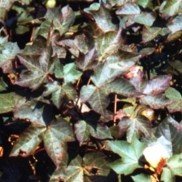 Symptoms may include smaller, very dark green leaves, with purplish reddening.
PSB Plus Caps
Potassium
Symptoms may include smaller, very dark green leaves, with purplish reddening.
PSB Plus Caps
Potassium
 It appears early in the growing season, begins in the lower canopy first, and then later spreads throughout the plant.
Potash Grow Caps
Boron
It appears early in the growing season, begins in the lower canopy first, and then later spreads throughout the plant.
Potash Grow Caps
Boron
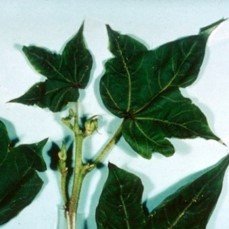 It may cause distorted, stunted terminal, abnormal uppermost leaves, and aborted flowers. Other symptoms of B shortage may be a "coon-tailed" appearance with dark rings on the leaf petiole (stem).
Alp
Sulfur
It may cause distorted, stunted terminal, abnormal uppermost leaves, and aborted flowers. Other symptoms of B shortage may be a "coon-tailed" appearance with dark rings on the leaf petiole (stem).
Alp
Sulfur
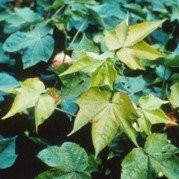 Sulfur deficiency symptoms first appear as a yellowing, chlorotic appearance in the upper leaves and leaf veins, because S is not very mobile in the plant.
Sulphur Caps
Iron
Sulfur deficiency symptoms first appear as a yellowing, chlorotic appearance in the upper leaves and leaf veins, because S is not very mobile in the plant.
Sulphur Caps
Iron
 Iron deficiency may appear as leaf veins remaining somewhat green, while uppermost leaves become chlorotic and bleached because Fe is not readily transferred from older to younger tissues.
Alp
Zinc
Iron deficiency may appear as leaf veins remaining somewhat green, while uppermost leaves become chlorotic and bleached because Fe is not readily transferred from older to younger tissues.
Alp
Zinc
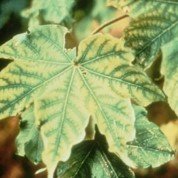 Usually, Zinc deficiency appears in the younger leaves in the upper canopy because the nutrient is not readily translocated from older to younger leaves.
Zinc Grow caps
Manganese
Usually, Zinc deficiency appears in the younger leaves in the upper canopy because the nutrient is not readily translocated from older to younger leaves.
Zinc Grow caps
Manganese
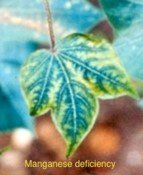 Symptoms of interveinal chlorosis occur in the younger leaves in the upper canopy because Mn is not readily translocated from older to younger tissues.
Alp
Symptoms of interveinal chlorosis occur in the younger leaves in the upper canopy because Mn is not readily translocated from older to younger tissues.
Alp


